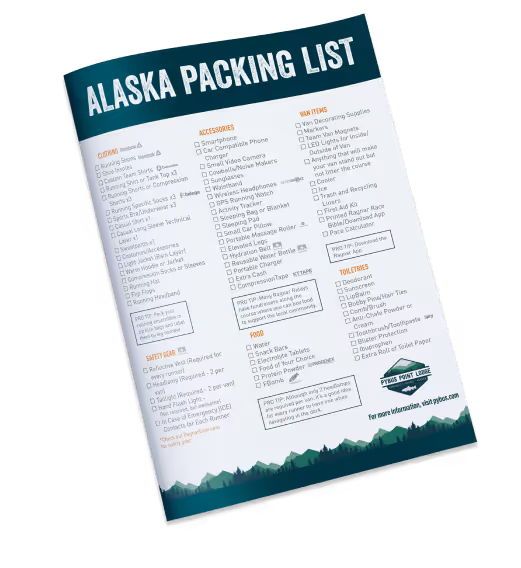Numerous areas of our world have changed as technology has upgraded over the years, and fishing is no exception. Today's rods and reels used throughout the fishing world utilize cutting-edge materials and crafting to handle difficult elements, allowing you to get the very best quality and durability out of them for numerous fishing adventures.
At Pybus Point Lodge, we're happy to provide clients with any of the fishing equipment they might need -- or, if you're a longtime angler who has your own gear, we're happy to accommodate this as well. If you're specifically looking to upgrade your rod and reel setup for one of our saltwater fishing excursions in Alaska, what are some of your modern options available, and how can you go about choosing between them? Here's a basic primer.
One of the most common rod and reel setups for saltwater fishers today is the spinning approach, which uses a fixed spool mounted directly below a spinning rod. These are popular options for beginners, because they offer decent power and accuracy without expensive manufacturing.
To fish with a spinning reel, simply hold the rod and reel in your dominant hand, and use the other hand to operate the spool with your thumb or forefinger. A tension bar will keep line from leaking out of the reel while you're not fishing. If you need more power for a big catch, simply push down on the rod's tip to engage more tension -- this is only necessary when using fresh water rods, however, as saltwater fishing rods don't need any extra tension.
Spinning reels can come with two different types of spools: braid and mono (monofilament). We recommend using a spinning reel with braid, because it is extremely strong and abrasion-resistant; this means you won't have to worry about line breaking or weakening, even if you're by the ocean.
Another benefit of starting out with a spinning rod and reel is that it has multiple fishing methods. If you're inexperienced, try simple maneuvers like casting or trolling before moving on to more challenging tactics like bottom-fishing -- there's no need to buy two separate rods until you know exactly what you want to do.
If a spinning rod and reel isn't a good match for your needs, a baitcasting rod and reel might be more appropriate. Baitcast rods are usually longer than spinning rods -- anywhere from 7 to 9 feet long -- since they need more power in order to reel in larger fish.
Baitcasting reels are mounted below the rod, just like spinning reels; however, they don't have an open spool. Instead, the line is wrapped around a metal disk called a "spider" or "bail." To reel in your catch, you need to manually crank your baitcasting reel with your fingers. This is a little trickier than simply working the spool on a spinning reel, and it requires more attention in order to keep line from tangling.
Casting with a baitcasting rod and reel is easier than using a spinning rod and reel; however, you probably won't be able to cast as far when using the same weight line. This is because the baitcasting reel's spool isn't as large, meaning you have to use more force to launch your lure further.
Baitcasting reels are also suitable for bottom-fishing setups. However, you'll need a heavier line and stronger rod in order to bring up larger fish from their underwater habitats.
A trolling rod is often considered an upgraded version of the baitcasting setup, one that involves a revolving spool reel sitting on top of the rod. Trolling reels use a level drag system that allows you to set maximum drag, then adjust pressure with a lever on the side of your reel.
These reels are shorter than most other kinds, at about 6 to 7 feet long. Instead of reels that manually attach to the bottom of your rod, they're held on by metal clips that slide onto the end of your fishing rod. This allows you to fish fairly quickly with a trolling setup, adjusting line and tension while you're out in the ocean.
Trolling rods and reels can support a variety of different fish sizes, and will be categorized by the line-test they're intended to support. Naturally, their 20-pound combos won't be conducive to larger fish types; a 130-pound combo, on the other hand, can handle quite a bit.
When choosing between these varieties (or any other you might be considering for saltwater fishing), here are a few other considerations to keep in mind:
For more on choosing the ideal fishing rod and reel setup for saltwater fishing needs, or to learn about any of our Alaskan fishing trips, wildlife adventures or other programs, speak to the staff at Pybus Point Lodge today.

Download, share, or print out our PDF Packaging list to make sure you bring all the gear you need for your Alaska vacation!
DOWNLOAD NOWDiscover why waterfalls around Pybus Point Lodge are unforgettable, offering stunning views and unique adventures. Plan your trip today!
LEARN MOREDiscover why people like you can’t stop talking about Pybus Point Lodge. More than 30 years ago, the lodge opened as a simple fishing camp, drawing a devoted following in spite of basic accommodations. With new owners and experienced guides and crew, our corner of Alaska has become an unbeatable fishing and eco-tourism resort.